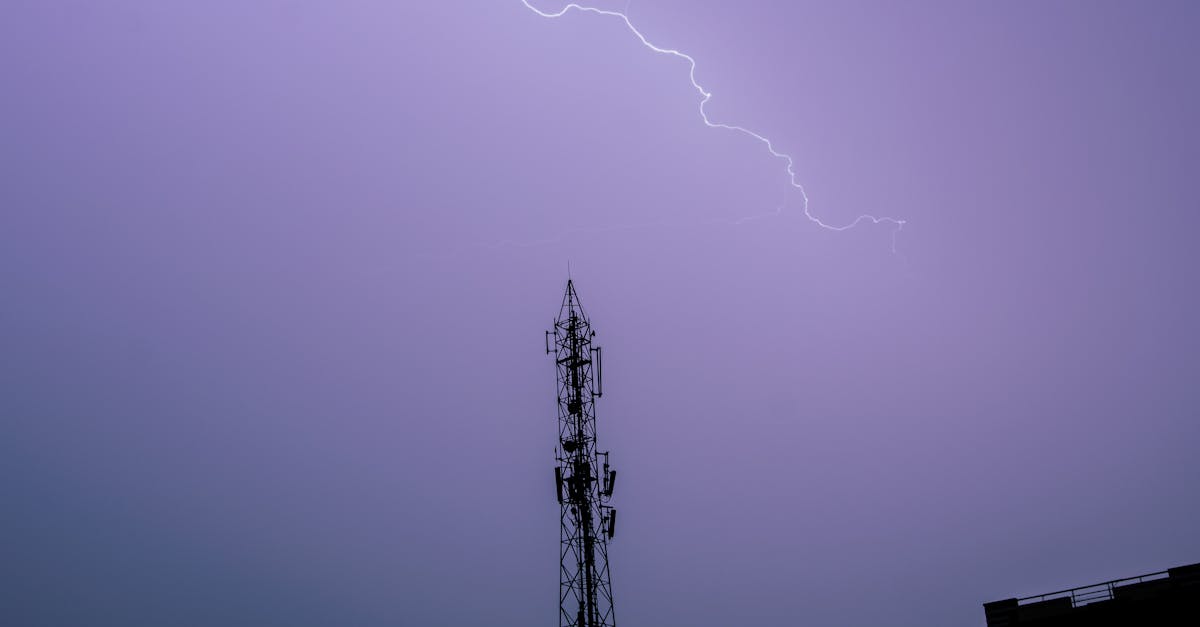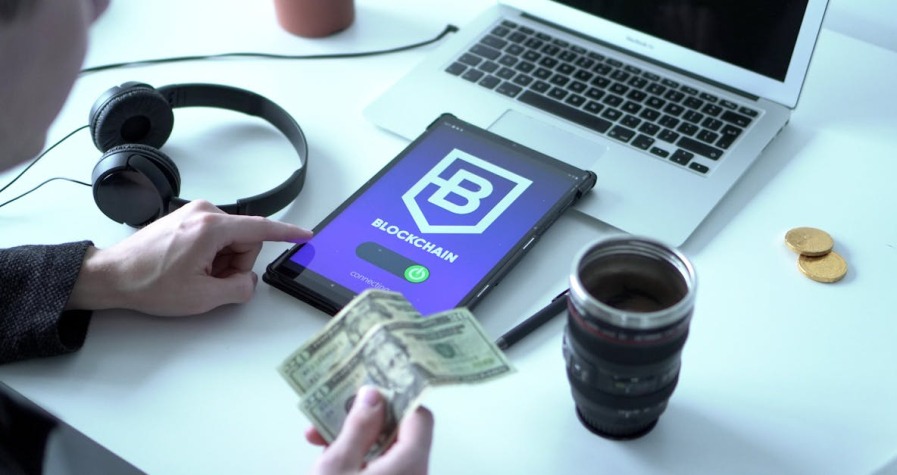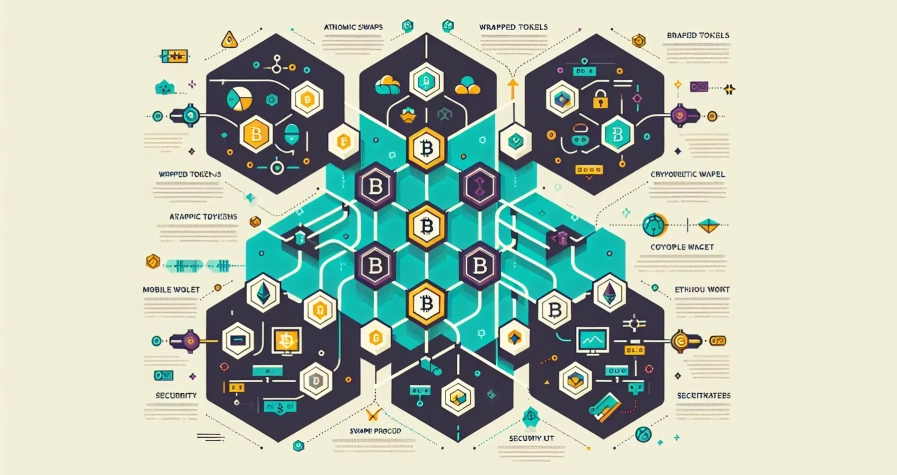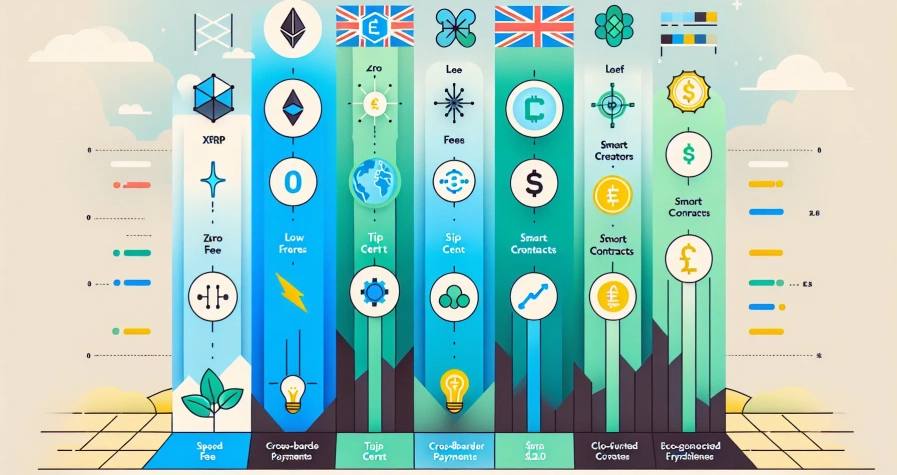Key Takeaways
- Lightning Network is Bitcoin’s second-layer scaling solution that enables instant, low-cost transactions by creating off-chain payment channels, addressing Bitcoin’s scalability issues of slow transaction times and high fees
- Transactions are lightning-fast and virtually free with payments completing in under a second at costs below one satoshi, making micropayments and everyday purchases economically viable for the first time
- Payment channels require Bitcoin to be locked upfront creating liquidity constraints where you can only spend what you’ve deposited, whilst channel management demands active monitoring and technical understanding
- Real-world applications are already transforming finance from cross-border remittances with 90-95% fee reductions to social media tipping, content monetisation, and IoT device payments
- Network centralisation poses potential risks as large, well-funded nodes become dominant routing hubs, potentially challenging Bitcoin’s decentralised principles and creating dependency relationships
- Getting started requires Lightning-compatible wallets such as Phoenix, Breez, or BlueWallet, with options ranging from automated custodial solutions to advanced self-custody nodes for maximum control
You’ve probably heard about Bitcoin’s scalability issues – slow transaction times and high fees that make everyday purchases impractical. The Lightning Network emerges as Bitcoin’s most promising solution to these challenges, offering a glimpse into cryptocurrency’s future.
This revolutionary second-layer protocol sits on top of the Bitcoin blockchain, enabling instant transactions at virtually no cost. Instead of recording every transaction on Bitcoin’s main chain, Lightning creates payment channels that allow you to send and receive Bitcoin off-chain, settling only when necessary.
Whether you’re a crypto enthusiast wanting to understand Bitcoin’s evolution or someone curious about faster digital payments, grasping Lightning Network basics is essential. This technology doesn’t just promise theoretical improvements – it’s already transforming how people use Bitcoin for everyday transactions, from buying coffee to sending remittances across borders.
What Is the Lightning Network?
The Lightning Network operates as Bitcoin’s second-layer scaling solution that creates payment channels between users without requiring every transaction to be recorded on the main blockchain. You interact with a decentralised network of interconnected payment channels that enable instant bitcoin transfers at minimal costs.
This protocol establishes bidirectional payment channels between two parties by locking bitcoin into a multi-signature wallet. You can conduct unlimited transactions within this channel whilst only the opening and closing transactions appear on the Bitcoin blockchain. The network connects these individual channels to create a web of payment routes that allows you to send bitcoin to anyone on the network.
How Lightning Network Channels Function
Payment channels require both parties to deposit bitcoin into a shared wallet that neither party controls independently. You create transactions that redistribute the deposited amounts between participants without broadcasting each payment to the blockchain. These off-chain transactions update the balance distribution within the channel whilst maintaining cryptographic security.
Channel capacity determines the maximum amount you can send in either direction. If you deposit 0.5 BTC and your counterpart deposits 0.3 BTC the total channel capacity reaches 0.8 BTC. Your sending capacity equals the amount you control within the channel at any given moment.
Lightning Network Routing Mechanisms
The network routes payments through interconnected channels using a process called onion routing. You don’t require a direct channel with every recipient as the protocol finds the shortest path through existing channels. Each intermediate node receives a small routing fee typically ranging from 1-1000 satoshis per transaction.
Smart contracts called Hash Time-Locked Contracts (HTLCs) ensure payment security during multi-hop transactions. These contracts guarantee that either the entire payment completes successfully or all intermediate transactions reverse automatically. You maintain full control over your funds throughout the routing process.
Lightning Network Technical Architecture
| Component | Function | Typical Value |
|---|---|---|
| Channel Capacity | Maximum transferable amount | 0.01-10 BTC |
| Routing Fee | Cost per transaction hop | 1-1000 satoshis |
| Settlement Time | Channel closing duration | 1-14 days |
| Transaction Speed | Payment confirmation time | Under 1 second |
Node software implementations include LND (Lightning Network Daemon) CLN (Core Lightning) and Eclair. You can run your own Lightning node or use custodial wallet services that manage channels on your behalf. Self-custody solutions provide complete control whilst custodial options offer simplified user experiences for newcomers.
How Does the Lightning Network Work?
The Lightning Network transforms Bitcoin transactions through three core mechanisms: payment channels, routing systems and network topology. These components work together to create an off-chain infrastructure that processes millions of transactions whilst maintaining blockchain security.
Payment Channels
Payment channels form the foundation of Lightning Network operations through multi-signature smart contracts. You and another party lock predetermined amounts of Bitcoin into a shared address on the main blockchain, establishing a bidirectional channel for unlimited transactions.
Each channel maintains an internal balance sheet tracking ownership changes without broadcasting every transaction to the blockchain. You can send and receive payments instantly within the channel at minimal cost, as the system only records opening and closing balances on-chain. Recent upgrades include Wumbo Channels, which eliminate previous capacity limits and allow you to create channels with any Bitcoin amount.
Channel management requires both parties to monitor the network and ensure proper closure. You can close channels cooperatively by broadcasting the final balance state, or use justice transactions if your counterpart attempts fraudulent behaviour.
Routing Payments
Routing enables payments between parties without direct channels through interconnected network paths. The system employs Hashed Time-Locked Contracts (HTLCs) to secure multi-hop transactions, combining cryptographic hash functions with time constraints for trustless payment forwarding.
When you send payments through intermediate nodes, each participant forwards the transaction without accessing the funds or trusting other network members. The routing algorithm automatically finds optimal paths considering factors like channel capacity, fees and reliability scores.
Multipath Payments enhance routing efficiency by splitting larger transactions into smaller components across separate routes. This approach increases payment success rates and utilises network liquidity more effectively, particularly for substantial transfers that exceed individual channel capacities.
Network Topology
The Lightning Network’s topology consists of interconnected payment channels forming a mesh structure across thousands of nodes globally. This decentralised architecture evolves continuously as participants open new channels, close existing ones and adjust liquidity allocation based on usage patterns.
Network nodes vary from large routing hubs with hundreds of connections to smaller personal nodes serving individual users. You can analyse network topology through metrics including node connectivity, channel distribution and geographic spread, which influence payment routing efficiency.
| Topology Metric | Current Status |
|---|---|
| Active Nodes | 15,000+ |
| Payment Channels | 75,000+ |
| Network Capacity | 5,000+ BTC |
| Average Channel Size | 0.067 BTC |
Liquidity management represents a critical topology consideration, as channels require balanced funding to facilitate bidirectional payments. Network participants continuously rebalance channels through circular rebalancing and submarine swaps to maintain optimal routing capabilities.
Benefits of the Lightning Network
The Lightning Network transforms Bitcoin’s transaction experience by addressing the blockchain’s primary limitations. You gain access to three fundamental advantages that make everyday Bitcoin payments practical and efficient.
Faster Transaction Speeds
You experience near-instant Bitcoin transactions when using the Lightning Network. Direct channel payments complete within fractions of a second whilst payments routed through multiple channels typically finish within a few seconds. This represents a dramatic improvement over Bitcoin’s main blockchain where transactions require 10-60 minutes for confirmation.
The speed advantage comes from off-chain processing that eliminates the need for block confirmations. Your Lightning payments bypass the traditional mining process and settle immediately through cryptographic verification. This instant settlement makes Lightning Network transactions suitable for point-of-sale purchases coffee shops retail stores and other time-sensitive scenarios.
Lower Transaction Fees
You pay significantly reduced fees when transacting through Lightning Network channels. Typical Lightning transactions cost less than one satoshi (0.00000001 BTC) making micropayments economically viable for the first time on Bitcoin. These minimal fees occur because miners only process channel opening and closing transactions rather than every individual payment.
The fee structure enables profitable transactions below Bitcoin’s smallest unit. You can send payments worth fractions of a penny whilst maintaining economic efficiency. This cost reduction opens new use cases including content monetisation streaming payments and micro-donations that weren’t previously possible with Bitcoin’s main layer fees.
Improved Scalability
You benefit from the Lightning Network’s capacity to process millions of transactions per second compared to Bitcoin’s 7 transactions per second limit. This scalability improvement stems from parallel processing across thousands of payment channels that operate simultaneously without competing for blockchain space.
The off-chain architecture means your transactions don’t contribute to network congestion. Multiple payment channels can process transactions concurrently whilst the main blockchain only records channel openings and closings. This design allows the Lightning Network to scale with user adoption without degrading performance for existing participants.
Current network metrics demonstrate this scalability in practice with over 75,000 active payment channels supporting thousands of simultaneous transactions across 15,000+ nodes globally.
Limitations and Challenges
The Lightning Network, despite its transformative potential for Bitcoin transactions, presents several operational challenges that you must understand before implementation. These constraints affect your ability to transact efficiently and may impact your overall Lightning Network experience.
Liquidity Requirements
You must lock Bitcoin into payment channels before conducting any Lightning Network transactions. This liquidity requirement means you can’t spend more Bitcoin than you’ve deposited in your channels, creating a fundamental constraint on transaction amounts.
Your channel’s liquidity directly affects payment success rates and routing efficiency. Insufficient funds in a specific channel force your transactions through longer network routes, increasing both fees and processing delays. Larger payments face particular challenges, as they require channels with substantial Bitcoin balances along the entire payment path.
The liquidity distribution across your channels determines your transaction capabilities. You might encounter failed payments when attempting to send amounts exceeding your channel’s available balance, requiring you to either open new channels with additional funds or find alternative routing paths through the network.
Channel Management
You’re responsible for actively managing your Lightning Network payment channels throughout their lifecycle. This includes opening new channels, funding them with appropriate Bitcoin amounts, monitoring their status, and closing them when necessary.
Channel opening requires an on-chain Bitcoin transaction, which incurs blockchain fees and confirmation times. You must evaluate the trade-off between channel capacity and the associated costs, particularly when Bitcoin network fees are elevated.
Your channel management extends to monitoring counterparty behaviour and ensuring adequate inbound liquidity for receiving payments. Unbalanced channels, where all funds sit on one side, limit your transaction directions and may require rebalancing operations to maintain optimal functionality.
Network Centralisation Concerns
The Lightning Network faces potential centralisation risks as large nodes with substantial liquidity become dominant routing hubs. These well-funded nodes can control significant portions of payment routing, creating dependency relationships that challenge Bitcoin’s decentralised principles.
Your transaction routing may become concentrated through a limited number of major hubs, potentially exposing you to censorship risks or service disruptions. Large Lightning nodes can theoretically monitor, delay, or block transactions flowing through their channels.
The economic incentives of the Lightning Network naturally favour nodes with higher liquidity and better connectivity, creating a tendency towards hub-and-spoke network topology. This evolution could result in a few powerful entities controlling the majority of Lightning Network transactions, contradicting the distributed nature of Bitcoin’s underlying protocol.
Real-World Applications and Use Cases
You can leverage the Lightning Network across numerous practical applications that demonstrate its transformative potential for global payments and digital commerce. These implementations showcase how off-chain transactions solve Bitcoin’s scalability challenges while creating new opportunities for financial innovation.
Cross-Border Remittances
You’ll find the Lightning Network revolutionises international money transfers by eliminating traditional banking intermediaries. Fintech services like Strike use LN infrastructure to enable instant remittances from the US to countries including the Philippines and Mexico. Traditional transfer fees typically range from 5-10% of the transaction amount, whilst Lightning Network remittances cost less than 1%. You can send money across continents in seconds rather than days, bypassing costly correspondent banking networks that create delays and additional charges.
Micropayments for Digital Content
You can conduct small-value transactions efficiently through Lightning Network micropayments that weren’t economically viable on Bitcoin’s main blockchain. Content creators benefit from direct monetisation models where you pay per article, tip social media posts, or support streaming content with minimal transaction overhead. Platforms like Twitter and Nostr integrate Lightning Network tipping functions that allow you to send satoshis instantly to reward valuable content.
Social Media and Creator Economy
You’ll discover seamless integration between social platforms and Lightning Network payments that enable direct creator support. Twitter users can receive Bitcoin tips through Lightning Network integration, whilst Substack writers accept micropayments for premium content access. These payment rails eliminate platform fees and geographical restrictions that traditionally limit creator monetisation options.
Financial Inclusion in Developing Markets
You can access Bitcoin-based financial services through Lightning Network infrastructure that bypasses traditional banking limitations in underbanked regions. The peer-to-peer nature of Lightning channels provides financial access where conventional banking services remain limited or expensive. Users in developing countries can store value, send remittances, and conduct commerce without requiring traditional bank accounts or credit histories.
Internet of Things and Machine Payments
You’ll witness emerging applications where IoT devices conduct autonomous micropayments through Lightning Network channels. Smart contracts facilitate machine-to-machine economic interactions where devices can pay for services, data, or resources automatically. This creates new business models for connected devices that can operate independently within Bitcoin’s payment infrastructure.
| Application Category | Transaction Speed | Fee Reduction | Geographic Reach |
|---|---|---|---|
| Cross-border remittances | Instant | 90-95% lower | Global |
| Micropayments | Sub-second | 99%+ lower | Universal |
| Social media tipping | Real-time | Near-zero | Platform-wide |
| IoT payments | Automated | Minimal | Device networks |
Getting Started with the Lightning Network
Entering the Lightning Network ecosystem requires specific technical preparation and wallet configuration. You’ll establish your Lightning infrastructure through dedicated wallet applications and strategic payment channel management.
Setting Up a Lightning Wallet
Lightning-compatible wallets serve as your gateway to Bitcoin’s second-layer payment infrastructure. You can choose from established applications like Phoenix, Breez, BlueWallet, Zap, or Zeus, each offering distinct functionality levels and user experiences.
Non-custodial wallets provide complete control over your private keys and Bitcoin storage. Phoenix and Breez offer automated channel management, handling technical complexities whilst maintaining your cryptocurrency ownership. These applications automatically open channels based on your transaction patterns and balance requirements.
Custodial wallets like BlueWallet’s Lightning implementation simplify the user experience by managing channels on your behalf. You trade some control for convenience, as the service provider maintains your Bitcoin custody and channel operations.
Advanced Lightning nodes like Zeus connect to your personal Bitcoin node infrastructure. You gain maximum privacy and control but require technical expertise to configure routing, liquidity management, and channel monitoring.
Fund your Lightning wallet by transferring Bitcoin from exchanges, other wallets, or purchasing directly through integrated services. Most Lightning wallets display both your on-chain Bitcoin balance and Lightning channel capacity, enabling seamless transitions between Bitcoin layers.
Opening Payment Channels
Payment channels establish your Lightning Network connectivity through multi-signature smart contracts on Bitcoin’s blockchain. You commit a specified Bitcoin amount to each channel, determining your maximum sending capacity and enabling instant off-chain transactions.
Channel funding requires an on-chain Bitcoin transaction that locks your cryptocurrency into the payment channel structure. The funding amount establishes your channel capacity—you can send up to this Bitcoin quantity through the channel without additional blockchain transactions.
Inbound liquidity enables receiving Lightning payments through existing channels. Many Lightning wallets automatically request inbound liquidity through submarine swaps or liquidity marketplace services. You can also receive inbound capacity by making Lightning payments, which shifts channel balance allocation.
Channel selection impacts your Lightning Network connectivity and routing efficiency. Popular Lightning nodes with substantial liquidity provide better payment routing options. Some wallets connect to multiple channels automatically, distributing your Bitcoin across various network paths.
Channel management involves monitoring capacity utilisation, routing performance, and connection stability. Modern Lightning wallets display channel statistics including local balance, remote balance, and recent transaction activity. You can close channels when needed, retrieving your Bitcoin to the main blockchain minus applicable network fees.
Lightning channels remain active indefinitely once opened, supporting unlimited transaction volumes until you decide to close them. The global Lightning Network comprises over 15,000 active nodes supporting 75,000 payment channels with 5,000 BTC total capacity, providing extensive routing infrastructure for your transactions.
Conclusion
The Lightning Network represents a pivotal advancement in Bitcoin’s evolution as a practical payment system. By addressing the blockchain’s inherent scalability limitations you can now access near-instant transactions with minimal fees making Bitcoin viable for everyday commerce.
While challenges around liquidity management and potential centralisation risks remain the network’s growing adoption demonstrates its transformative potential. With over 15,000 active nodes and expanding real-world applications you’re witnessing the foundation of Bitcoin’s payment future being built today.
Whether you’re interested in cross-border remittances micropayments or simply faster Bitcoin transactions the Lightning Network offers compelling solutions that bridge the gap between cryptocurrency innovation and practical usability.
Frequently Asked Questions
What is the Lightning Network and why was it created?
The Lightning Network is a second-layer protocol built on top of Bitcoin that enables instant, low-cost transactions through off-chain payment channels. It was created to address Bitcoin’s scalability issues, particularly slow transaction times and high fees that prevent everyday purchases like buying coffee or sending remittances.
How does the Lightning Network work?
The Lightning Network creates bidirectional payment channels between users using multi-signature smart contracts. Users deposit bitcoin into shared wallets, enabling unlimited off-chain transactions whilst maintaining cryptographic security. Only the opening and closing transactions are recorded on the main Bitcoin blockchain, reducing congestion and fees.
What are Hash Time-Locked Contracts (HTLCs)?
HTLCs are smart contracts that ensure payment security during multi-hop transactions on the Lightning Network. They use cryptographic locks and time constraints to guarantee that payments can only be claimed by the intended recipient or automatically refunded if the transaction fails within a specified timeframe.
What are the main benefits of using the Lightning Network?
The Lightning Network offers three primary benefits: faster transaction speeds with near-instant payments completing in fractions of a second, dramatically lower fees often costing less than one satoshi, and improved scalability enabling millions of transactions per second across thousands of payment channels simultaneously.
What are the limitations of the Lightning Network?
Key limitations include liquidity requirements where users must lock Bitcoin into channels, restricting transaction amounts and success rates. Users must also manage their channels, incurring on-chain fees. Additionally, there are centralisation risks as larger nodes with substantial liquidity may dominate routing.
What wallets can I use for the Lightning Network?
Popular Lightning-compatible wallets include Phoenix, Breez, BlueWallet, Zap, and Zeus. These offer different functionalities, with non-custodial wallets providing complete control over private keys, whilst custodial wallets simplify the user experience at the cost of some control over funds.
What are Wumbo Channels?
Wumbo Channels are recent upgrades to the Lightning Network that have removed previous capacity limits on payment channels. This enhancement allows users to create channels of any Bitcoin amount, providing greater flexibility for larger transactions and improved network liquidity management.
How does routing work on the Lightning Network?
The Lightning Network uses onion routing to find the shortest path for payments through interconnected channels. This system allows payments to be forwarded through intermediate nodes without requiring trust between participants, with Multipath Payments splitting larger transactions across separate routes for enhanced efficiency.
What real-world applications does the Lightning Network support?
The Lightning Network supports cross-border remittances, micropayments for digital content, financial inclusion in developing markets, and emerging IoT applications where devices conduct autonomous micropayments. It’s particularly transformative for global payments and digital commerce, eliminating traditional banking intermediaries.
How many nodes and channels are currently active on the Lightning Network?
The Lightning Network currently operates with over 15,000 active nodes, 75,000 payment channels, and a network capacity of 5,000 BTC. This decentralised mesh structure is dynamic, with participants continuously opening and closing channels whilst adjusting liquidity to optimise routing capabilities.








